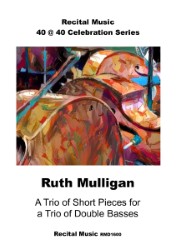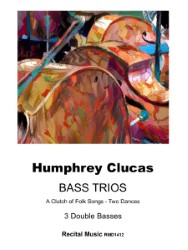Your basket is currently empty!
Sonatina arr. Double Bass Quintet

Description
The arrangement for Double Bass, Quintet by Teppo Hauta-aho was created in April 1977 and originally used solo tuning for basses 1-3 and orchestral tuning for …bass 4 and 5. Recital Music’s new edition keeps everyone in the same tuning, which is far more practical, and this version is in G minor and with the solo line in treble clef.
Beethoven’s Sonatina WoO 43, No.1 is charming and elegant, typical of the style of the late 18th-century, and is accessible to bassists and audiences alike. It would easily fit into any recital or concert, emphasises the lyrical and sonorous qualities of the double bass and is a great addition to the transcription, Repertoire.
2020 was the 250th anniversary of the birth of Ludwig van Beethoven (1770-1827), one of the greatest composers of the past 300 years. He changed everything, creating a seismic link from the Classical era and into the Romantic age, and he had no compunction in tearing up the traditional rule book and creating a completely new set of rules. Much of his music is still at the heart of the, Repertoire today and alongside his greatest symphonies, concertos and chamber music is a wealth of works from his youth which is probably closer to the style and traditions of the day than the ground-breaking music of the later and greater Beethoven.
In 1796, after previous studies with Mozart in 1787 and Haydn in 1792 and having lived in Vienna for a number of years, Beethoven set out on a journey to Prague, Dresden, Leipzig and Berlin. In Prague he met Countess Josephine Clary-Aldringen, later Countess von Clam-Gallas when she married Count Christian von Clam-Gallas, and composed a series of works for mandolin for her. The instrument was known to him through his friendship in Vienna with Wenzel Krumpholz, a violinist and mandolin virtuoso who played violin in the opera orchestra in Vienna, and Krumpholz championed Beethoven’s music at a time when his music was often misunderstood.
It is thought that Beethoven composed six works for mandolin, although only four have survived and these manuscripts were discovered in the family archives of Count von Clam-Gallas. Sonatina in C minor (WoO 43, No.1) is originally for mandolin and harpsichord, was composed in 1796, although the first publication in ‘Ludwig van Beethovens Werke, Serie 25: Supplement, Nr. 295’ in Leipzig by Breitkopf & Härtel gives the date a year earlier, and it was not published until 1865.
This is probably the most well-known of the four works and has been arranged for many instruments, including the double bass. Marked Adagio and in ternary form, the Sonatina is a masterpiece in concision and simplicity. Beginning and ending in C minor, with the middle section a more animated C major, the beautifully supportive accompaniment is chordal and static in the C minor outer parts and arpeggiated in the C major middle section.
[David Heyes / Somerset, 2020]
R.R.P £8
Our Price £6.80
Shipping Costs: No shipping



